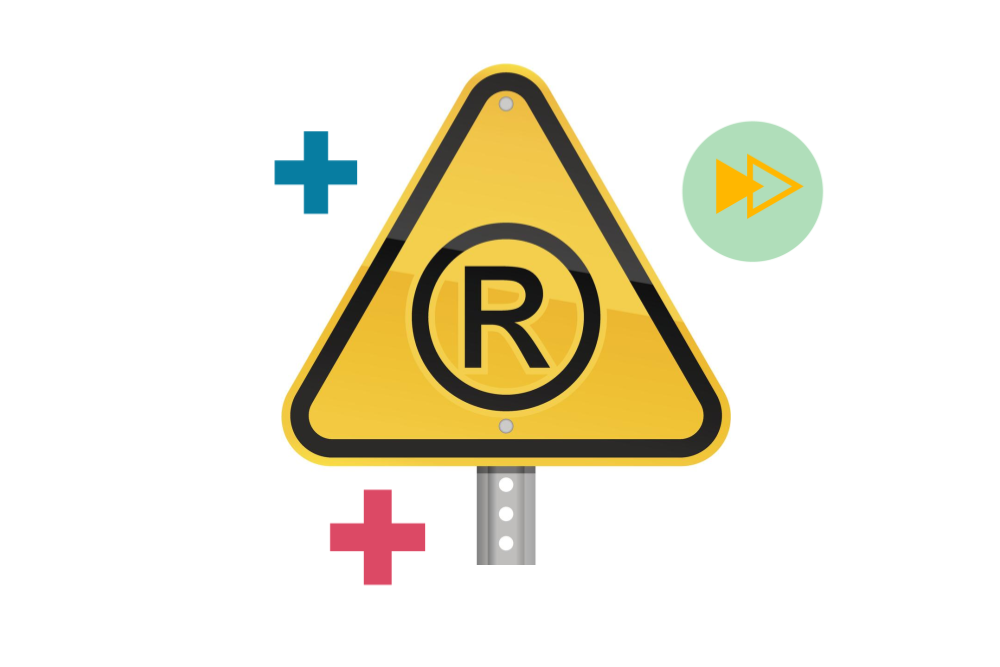
Author Matt Sammon
It’s fair to say that 2020 has been a year like no other. However, despite the difficulties presented by the pandemic the UK and EU Intellectual Property Offices and the Courts have remained active and have dealt admirably with the obstacles presented to hear trade mark cases and keep the wheels of justice rolling.
In fact, the challenging conditions of 2020 appear to have caused a spike in trade mark filing activity. The UK Intellectual Property Office regularly publishes information on how many trade mark applications they receive and May and June 2020 saw a noticeable increase in the amount of trade mark applications filed in the UK as shown in the below chart.

This may be as a direct result of the pandemic as companies look to adapt their activity to suit the ‘new normal,’ or it may be a response to Brexit with the transitional provisions due to end on 31 December 2020. In this article, our Chartered Trade Mark Attorneys review the leading trade mark cases from 2020 and explain the best bits of each:
- The invalidation of Banksy’s Flower Thrower trade mark

The logo above, Banksy’s famous flower thrower artwork was registered as a trade mark by Pest Control Office Limited, in 2014, a UK company understood to be acting on behalf of the notoriously anonymous artist. In 2020, this registration was successfully invalidated by a company called Full Colour Black Limited that sold greetings cards featuring graffiti and street art. The invalidity action claimed that the application was filed in bad faith on the basis that the proprietor had no intention of using the logo as a trade mark.
It was ultimately proven that the owners, Pest Control Office Limited did indeed have no intention to use the logo as a trade mark. No commercial activity had taken place until 2019, when Banksy opened a small retail outlet called ‘Gross Domestic Product,’ which by his own admission was solely for the purpose of attempting to prove use of the trade mark. This was not deemed sufficient to maintain the trade mark registration.
Why did Banksy register this trade mark?
One of the most interesting aspects of this Banksy case is that securing a trade mark registration for an artwork can be viewed as a deliberate attempt to prolong the period of protection of a work protected by copyright. Copyright lasts for the life of the author plus 70 years, whereas trade marks can be protected indefinitely. However, in this instance the motivation was more likely the artist’s desire to remain anonymous. In order to rely on copyright protection for the artwork the artist would need to reveal his identity, something he seems reluctant to do. For more information on the differences between trade mark and copyright protection see our earlier blog on the topic.
It is worth noting that there is an overriding principle in trade mark law that in order to maintain trade mark protection a trade mark must be used in relation to the goods or services for which it is registered or protection can be revoked.
2. Sky v Skykick
2020 kicked off with a long-anticipated decision in the case of Sky Plc, the well-known broadcaster and telecommunications company in their battle against Skykick, a US based software company. Sky had sued Skykick for trade mark infringement of their broad rights in the mark SKY which prompted Skykick to counterclaim to invalidate the trade mark registrations for SKY.
This dispute had been long running and the UK Courts had referred some key questions of law to the Court of Justice of the European Union (CJEU). The issue that had potential implications for all right holders was whether a trade mark applicant is acting in bad faith by filing an application to register a mark for goods and services for which they have no intention of using the mark and if that is the case could the entire registration be declared invalid or just the goods and services for which bad faith is found.
The question referred to the CJEU was aimed at addressing whether seeking an overly broad monopoly in a trade mark could put all rights afforded by that registration at risk or only those rights deemed to be beyond the commercial intentions of the applicant.
The CJEU ruled that a partial finding of bad faith was possible which led to a collective sigh of relief by brand owners. Had the decision gone the other way then it is likely that a whole host of famous trade mark registrations could be at risk.
The case has been appealed and is due to be heard in 2021 so we haven’t heard the end of it yet. To other major brands this serves as another reminder to ensure that the protection you seek is carefully thought out, in line with your IP strategy and appropriate to the commercial aims of your business.
3. Red Bull v Big Horn
In a battle of hoofed animal logos, Red Bull triumphed in a High Court Judgement. Big Horn UK Limited had begun selling energy drinks bearing the following (and quite familiar) logos and get up in 2017:

You may recognise the following trade mark registrations which belong to Red Bull:

No free riders allowed
Whilst the ruling stated that there was no likelihood of confusion, there were visual and conceptual similarities between the marks and the public were deemed to be likely to make an association between the trade marks. Consequently, the judge decided that the similarities were sufficient to ‘enable Big Horn to free-ride on the reputation of Red Bull.’
Where brand owners can establish a significant reputation in their trade mark rights they can enjoy an enhanced level of protection that allows them to prevent use of third party marks that give other businesses an advantage as a result of association, even where the public are unlikely to be confused. Red Bull have such a reputation and consequently Big Horn were deemed to infringe their trade mark rights.
4. Lewis Hamilton
Lewis Hamilton may have won a record equaling seventh Formula 1 world title in 2020, but he failed to cancel a registration for the trade mark HAMILTON. The company responsible for Lewis’ IP rights, 44IP Limited, attempted to register the trade mark LEWIS HAMILTON but found their application opposed by Hamilton International AG part of the Swiss watch giant SWATCH. In response 44IP applied to cancel the EU registration for HAMILTON owned by Hamilton International AG.
Hamilton International AG had EU registrations dated 1998 and 2014 and found their 2014 registration under attack. If an EU trade mark registration has not been used for a continuous period of 5 years after registration it can be revoked. 44IP claimed that the 2014 registration had been filed for the purpose of circumventing the requirement to prove use and therefore, had been filed in bad faith.
The claim for bad faith failed as 44IP failed to establish that this was the case. It was shown that the mark HAMILTON was in use and that there was a genuine commercial reason for filing a new application in 2014.
Common names mean tricky trade marks
This case highlights the difficulties of using common surnames as trade marks. Invariably there are others out there using the same or similar names and acquiring rights which can make it difficult to secure protection and make your brand distinctive. It also highlights the importance of conducting searches to see if your mark is free to use and register and acting quickly to secure registration.
5. USPTO v Booking.com
For our final trade mark case for 2020 let’s visit the USA. To clarify, trade mark rights are territorial and therefore, should be registered in each territory in which you intend to trade. The requirements for what can be registered differ from country to country and this case gives an insight to how the US Patent and Trade Mark Office view generic terms.
Generally speaking, trade marks are not protectable if they lack distinctive character or are entirely descriptive of the goods or services for which protection is sought. However, what is deemed ‘distinctive’ can vary greatly from one country to another. The US generally take a more relaxed view on such terms when compared to the UK and EU Trade Mark Registries and this case serves to highlight that difference. For more information on what can be protected see our earlier blog on the topic.
The well-known hotel booking website, Booking.com, sought to register ‘Booking.com’ as a trade mark. The USPTO rejected the application on the basis that the term ‘booking’ was generic for the services and did not serve the function of a trade mark, which is to designate the origin of the services. Furthermore, the USPTO argued that the addition of a top level domain name, such as ‘.com,’ to a generic term should result in a generic combination and they requested that a ‘per se’ rule be created.
Public perception matters
In the decision, written by the late Ruth Bader Ginsburg, the Court ruled that the term ‘Booking.com’ has become a term that is not generic as to source for consumers and is therefore, not generic. This decision supports the principle of ‘acquired distinctiveness,’ which means that non-distinctive terms can become distinctive and protectable by trade mark registration, if the Applicant can demonstrate that the public perceive the term as an indication of origin rather than a descriptor, as a result of the use made of that trade mark.
If you are looking to adopt seemingly descriptive or generic brand names it is important to conduct a trade mark search to ascertain whether the mark has been registered by a third party before commencing use to avoid falling foul of a trade mark infringement action.
We create real IP value
From the everyday to the IP emergency, our accomplished Chartered Trade Mark Attorneys and IP Solicitors are driven to get the very best outcome for every brief for every client, every time! Sonder & Clay are a full service IP law firm with proven expertise and results in IP protection, strategy, disputes, and exploitation. Learn more about our IP services or get in touch with us for a complimentary IP audit today.



